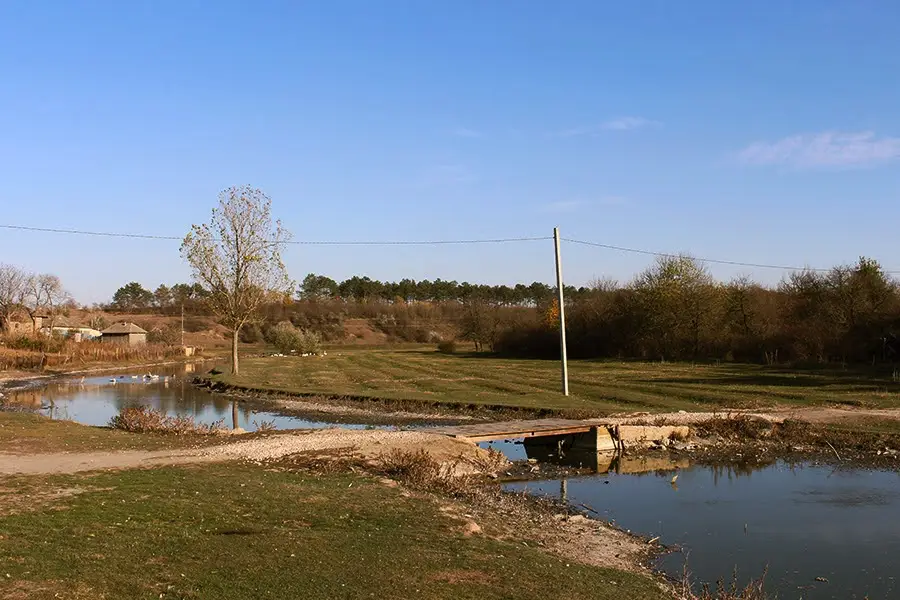Picture a thriving neighborhood nestled along a picturesque river. It’s a testament to a harmonious coexistence with nature. Yet, the same waters that offer serenity can – in a heartbeat – turn into a formidable force, putting lives and livelihoods at risk. This is when the floodplain management regulations have the utmost importance.
Living near rivers and lakes offers recreational opportunities but also poses the risk of catastrophic flooding. There are regulations that guide construction and planning in floodplain areas. Their goal is to balance community and economic development with flood hazard mitigation.
Floodplain management regulations have become the silent architects of safety, dictating how we can responsibly inhabit these dynamic landscapes. At Cypress, our experts help clients navigate the intricacies of floodplain management policies.
In this article, we’ll explore what key regulations shape floodplain management and why adherence to them is so critical. Join us as we dive into the science and policies guiding responsible development in flood-prone regions.

Floodplain Management Regulations
Floodplain management regulations are guidelines controlling development in flood-prone areas. They aim to reduce flood risks, protect lives and property, and encourage sustainable development. These regulations involve zoning restrictions, building codes, and land-use planning.
As experts in floodplain management, our team at Cypress helps guide clients through interpreting and implementing these regulations responsibly. We assist with regulatory compliance, play a practical role in minimizing flood impacts, and foster community resilience.
Key Components of Floodplain Management Regulations
Zoning and land use planning
Zoning and land use planning are foundational aspects of floodplain management regulations.
Zoning ordinances specifically allocate different land areas for various uses and limit high-risk activities in flood-prone zones. This meticulous planning prevents inappropriate development and ensures communities are resilient to potential flooding.
Land use planning integrates environmental considerations and guides sustainable development practices within floodplains. These regulations prioritize controlled growth and minimize the exposure of vulnerable areas to flood hazards.
Building codes and standards
Building codes establish rigorous guidelines for construction in flood-prone regions. These standards dictate elevation requirements, structural design, and the use of flood-resistant materials. Adherence to these codes is crucial for constructing resilient structures capable of withstanding flood events.
Building codes play a pivotal role in safeguarding lives and properties by incorporating engineering principles and lessons from past floods. Strict enforcement of these codes is essential to enhance community resilience, mitigating the impact of floods on structures and infrastructure.
Elevation and floodproofing requirements
In floodplain management, elevation and floodproofing are critical components aimed at mitigating flood risks and protecting structures.
Structures in flood-prone areas are often required to be elevated above the base flood elevation (BFE). This minimizes the risk of flood damage by placing the habitable portions of a building above the potential floodwater level. Elevation requirements are crucial in ensuring the safety and resilience of communities.
While elevation focuses on keeping the structure above flood levels, floodproofing is about making the structure resistant to water intrusion.
Therefore, floodproofing involves making a structure resistant to flood damage. This can include waterproofing walls, installing watertight doors and windows, and using materials that can withstand exposure to water.

Stormwater management and drainage regulations
Effective stormwater management is integral to floodplain regulations because it prevents excessive water accumulation and minimizes flood risks.
Regulations often dictate how stormwater should be managed within and around flood-prone areas. These include guidelines for the design and implementation of stormwater infrastructure, such as retention ponds and drainage systems. Proper stormwater management reduces the likelihood of flooding by efficiently directing and controlling rainwater runoff.
On the other hand, drainage regulations outline the criteria for designing drainage systems to ensure the efficient removal of water from flood-prone areas.
Well-designed drainage systems help prevent localized flooding, erosion, and other water-related issues. Compliance with drainage regulations is essential for sustainable floodplain management and community safety.
Legal Frameworks and Regulatory Authorities
1. Federal regulations
National Flood Insurance Program (NFIP)
Enforced by the Federal Emergency Management Agency (FEMA), NFIP sets the stage for floodplain management at the federal level.
It mandates communities to adopt and enforce floodplain management regulations to qualify for federally-backed flood insurance. NFIP maps identify flood-prone areas, guiding development and construction activities to minimize the risk of flooding.
Clean Water Act (CWA)
The CWA, administered by the Environmental Protection Agency (EPA), complements floodplain regulations by addressing water pollution. It regulates discharges into water bodies, including those in floodplains, promoting water quality and ecosystem protection.
2. State and local governance
State floodplain management programs
Many states have their own floodplain management programs that are built on federal guidelines to address unique regional challenges. These programs often enhance federal regulations to suit local conditions and ensure comprehensive flood risk reduction.
Local zoning and ordinances
At the local level, city and county governments play a vital role in floodplain management.
Local authorities implement measures to control development through zoning ordinances and land use regulations, which safeguards communities against flood risks. They work in tandem with federal and state regulations, tailoring floodplain management to the specific needs of their jurisdiction.
Permitting Process and Enforcement in Floodplain Management
Permitting process for development within floodplain areas
At Cypress, our experts guide clients through the permitting process, which is a structured approach to regulating development activities in flood-prone zones, by ensuring they align with established guidelines. The process typically involves several key steps:
- Pre-application consultation – Developers consult with local authorities to understand regulatory requirements and assess the feasibility of their projects in flood-prone areas.
- Application submission – Developers submit comprehensive applications detailing the proposed project, its impact on the floodplain, and mitigation measures. These include elevation certificates, construction plans, and environmental assessments.
- Review by regulatory agencies – Local regulatory agencies thoroughly review the application, assessing its compliance with zoning laws, building codes, and floodplain management regulations. Environmental impacts and proposed mitigation measures are carefully examined.
- Public input – Some jurisdictions incorporate public input, allowing community members to express concerns or support for the proposed development in flood-prone areas.
- Decision and permit issuance – Regulatory authorities make informed decisions on whether to issue the permit based on the thorough review. If approved, the developer is granted permission to proceed with the project.
Role of enforcement mechanisms, inspections, and penalties
To ensure compliance with floodplain management regulations, the following robust enforcement mechanisms are crucial:
- Inspections – Regulatory authorities conduct regular inspections during and after construction to verify adherence to approved plans and compliance with floodplain regulations. These include checking elevations, floodproofing measures, and overall construction quality.
- Penalties for non-compliance – Strict penalties, such as fines or project halts, may be imposed for non-compliance with floodplain regulations. These penalties serve as deterrents and encourage developers to adhere to established guidelines.
- Enforcement authority – Regulatory agencies, often local building departments or environmental offices, have the authority to enforce compliance. This ensures that developments in flood-prone areas meet the necessary standards for safety and resilience.
The permitting process and enforcement mechanisms work in tandem to strike a balance between allowing development and safeguarding communities from the potential hazards associated with flood-prone areas.

Conclusion
Our exploration of floodplain management regulations has illuminated the policies guiding development in flood-prone regions. We have seen how zoning, building codes, and permitting processes help communities thrive sustainably next to rivers.
While technical complexities exist, this article highlights how regulatory compliance fosters safety and resilience. We hope you are aware of the importance of floodplain management regulations in ensuring development while reducing risks.
Though adherence to wise codes and foresight, we at Cypress help build neighborhoods that harmoniously coexist with rivers’ beauty. Though challenges remain, progress lies in diligent cooperation, equitably balancing human needs and environmental realities.
